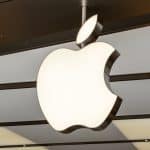The U.S. has introduced a 104% tariff on Chinese-made imports. This change affects companies like Apple, which rely heavily on Chinese factories. To avoid immediate damage, Apple flew in extra inventory ahead of the April deadline. This airlift included iPhones and Macs.
However, that stock won’t last long. Apple must now decide whether to raise prices, cut profits, or accelerate production in countries like India and Vietnam.

How Apple May Hide Higher Costs
Apple has a long history of managing prices without shocking consumers. Many buyers already spend more than the base model price by choosing higher storage. For instance, the iPhone 15 Pro Max starts at $1,199 for 256GB. But the 1TB model costs $1,599.
Instead of raising base prices, Apple may tweak storage tiers, offer fewer trade-in incentives, or bundle new services to mask increases.
Monthly Payments Help Soften the Blow
Most Apple customers now use monthly installment plans. These zero-interest options spread payments across 24 months. A $200 increase only adds $8 a month.
Because of this, Apple can charge more without making it feel more expensive at checkout. This approach helps keep starting prices the same while slowly increasing what customers actually pay.
iPhones Are Lasting Longer
The average upgrade cycle has stretched to nearly three years. That means people are keeping their phones longer. If costs rise even slightly, more users may delay upgrades. This could reduce Apple’s long-term revenue from hardware.
What to Expect Next
Apple is expected to launch its next iPhone in September. If you’re planning to upgrade, it might be smart to act sooner rather than later. Future models may look similarly priced but come with hidden cost increases.
As Apple adjusts to tariffs, consumers should keep an eye on trade-in values, storage options, and monthly plans. These may change even if the base price stays the same.












